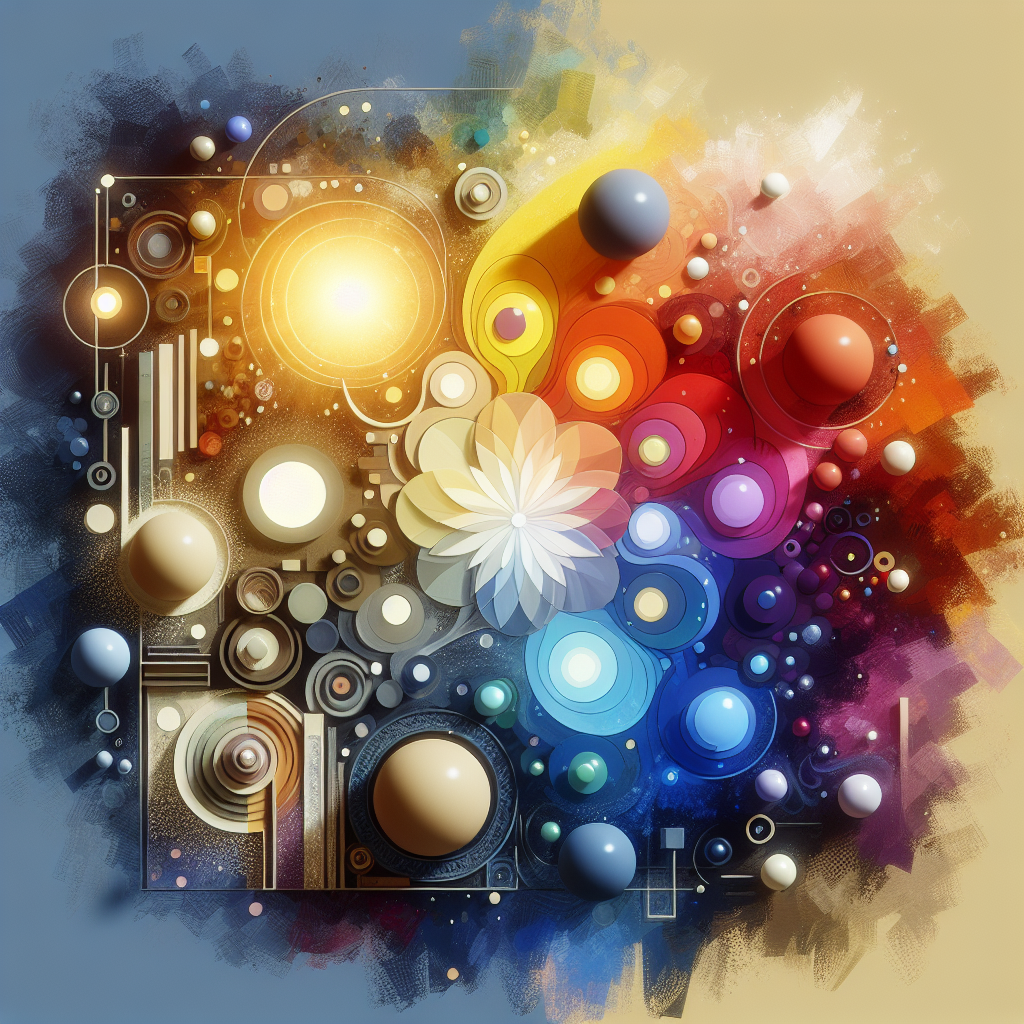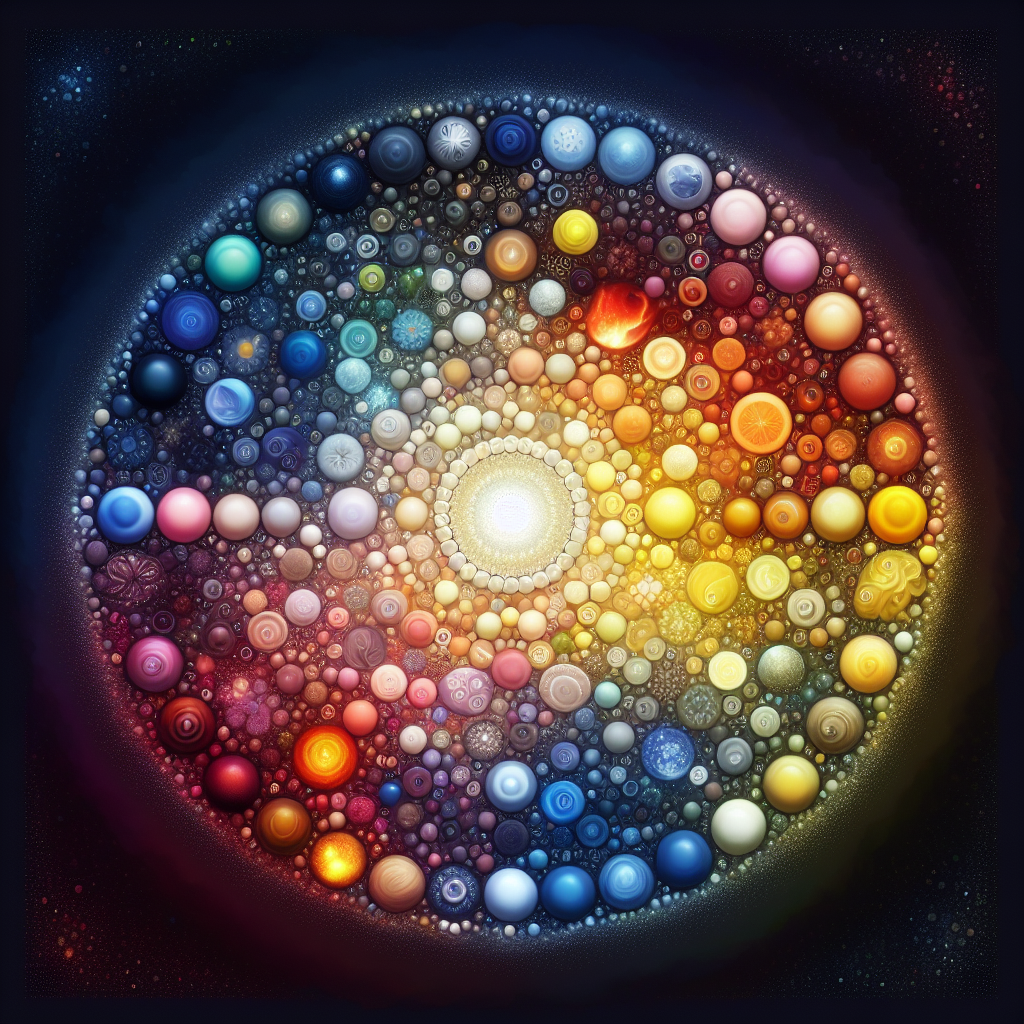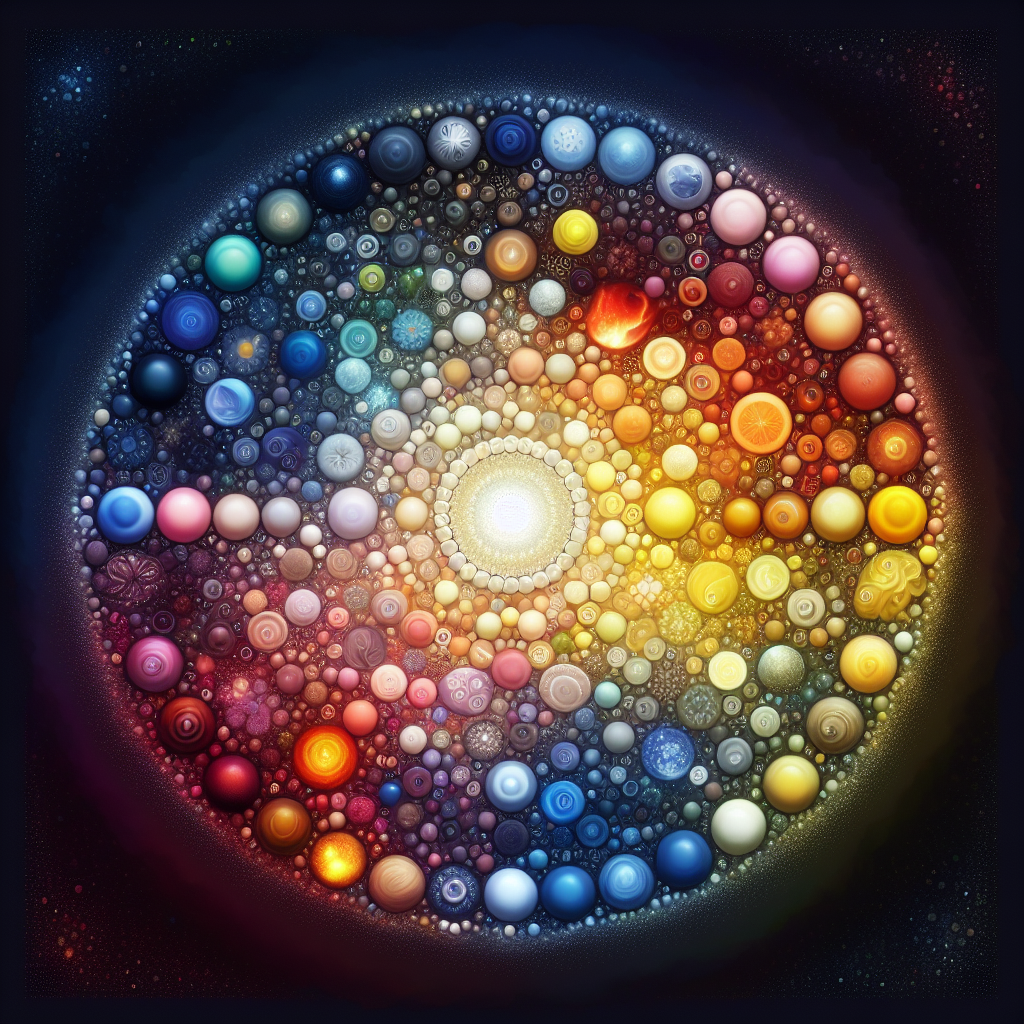You’ve probably come across the terms “light” and “medium” in various contexts, but have you ever wondered what exactly sets them apart? In this article, we’ll explore the fundamental differences between light and medium, whether it’s in terms of weight, intensity, or even texture. Whether you’re trying to choose the perfect shade of foundation or pick the ideal roast for your coffee, understanding the distinction between light and medium will enable you to make informed decisions and enhance your overall experience. So let’s dive in and unravel the mystery behind these two commonly used descriptions.
What is Light
Definition of Light
Light is a form of electromagnetic radiation that is visible to the human eye. It consists of tiny particles called photons, which travel in waves. These waves carry energy and vibrate at different frequencies, resulting in the range of colors that we perceive. Light plays a crucial role in our daily lives, allowing us to see objects and perceive the world around us.
Characteristics of Light
Light has several key characteristics that make it unique. Firstly, it travels in straight lines, enabling it to create shadows when obstructed by objects. Secondly, light can be reflected off surfaces, bouncing back in a different direction. Additionally, it can also be refracted, or bent, when passing through different mediums. Moreover, light has a finite speed, which is approximately 299,792 kilometers per second in a vacuum.
Uses of Light
Light serves numerous purposes in our everyday lives. One of its primary applications is illumination, allowing us to light up our homes, streets, and public spaces. Light is also essential in photography, as it is captured by cameras to create images. Additionally, light is a vital component in optical fibers, which transmit data over long distances. Moreover, light is crucial in medicine, where it is used for various diagnostic and therapeutic purposes, such as in laser surgery.
What is Medium
Definition of Medium
A medium refers to a substance or material through which waves, including light, sound, or other forms of energy, can pass. It provides a pathway for the transmission of these waves. Examples of mediums include air, water, glass, and even space itself. A medium can greatly influence the behavior and characteristics of waves passing through it.
Characteristics of Medium
Mediums can have diverse characteristics that impact the transmission of waves. Density is a key property, describing how closely packed the particles within the medium are. Opacity refers to the degree to which a medium allows the passage of light; for example, a transparent medium allows light to pass through, while an opaque medium does not. Viscosity pertains to a medium’s resistance to flow, which can vary from low (as in water) to high (as in honey). Furthermore, mediums can exist in different states – solid, liquid, or gas – depending on factors such as temperature and pressure. Conductivity is another characteristic, denoting a medium’s ability to transmit heat or electricity.
Uses of Medium
Mediums play a crucial role in various aspects of our lives. For instance, air serves as a medium for sound transmission, enabling us to hear and communicate with one another. Water acts as a medium for aquatic life and is essential for transportation and irrigation. Glass acts as a medium for light transmission, allowing us to have clear windows and lenses for vision correction. Soil serves as a medium for plant growth and agriculture. These examples demonstrate the diverse uses and significance of mediums in our daily lives.

Properties of Light
Speed
Light has a finite speed, which is approximately 299,792 kilometers per second in a vacuum. This incredible speed allows light to travel vast distances and reach us from distant stars and galaxies. The speed of light is a fundamental constant in physics and plays a crucial role in our understanding of the universe.
Wavelength
The wavelength of light refers to the distance between two consecutive points on a wave, such as two peaks or two troughs. Different wavelengths are associated with different colors of light. For example, blue light has a shorter wavelength compared to red light. The range of visible light wavelengths is between approximately 380 to 700 nanometers.
Frequency
Frequency is the number of wave cycles that pass through a given point in one second. It is measured in Hertz (Hz). Light with a higher frequency is associated with greater energy. In the visible light spectrum, violet light has the highest frequency, while red light has the lowest frequency.
Reflection
Reflection occurs when light waves bounce off a surface. This phenomenon allows us to see ourselves in mirrors and observe objects around us. The angle at which light strikes a surface is equal to the angle at which it reflects, following the law of reflection. The smoothness or roughness of a surface can affect the quality of reflection, with smooth surfaces producing clearer reflections.
Refraction
Refraction is the bending of light as it passes from one medium to another with a different density. This bending occurs due to a change in the speed of light when it transitions between mediums. The amount of bending is determined by the angle of incidence and the refractive index of the mediums involved. Refraction is responsible for effects such as the appearance of a broken pencil when partially submerged in water.
Properties of Medium
Density
Density refers to how closely packed the particles are within a medium. It is defined as the mass of a substance per unit volume. Denser mediums have particles that are closely packed, allowing less space for particles to move. For example, solids tend to have higher densities compared to gases. Density affects the behavior of waves passing through a medium, such as light or sound.
Opacity
Opacity describes how much light can pass through a medium. In opaque mediums, such as wood or metal, light is unable to pass through, resulting in no transmission. In translucent mediums, like frosted glass, light can partially pass through but is scattered in various directions. Transparent mediums, such as clear glass or air, allow light to pass through with minimal scattering.
Viscosity
Viscosity refers to a medium’s resistance to flow or deformation. It is a measure of the internal friction within a substance. High-viscosity fluids, like honey or oil, flow slowly and offer more resistance, while low-viscosity fluids, like water, flow more easily. Viscosity affects the behavior of waves passing through a medium and influences phenomena like the speed of sound through different liquids.
Solid, Liquid, Gas
Mediums can exist in different states, namely solid, liquid, or gas. Solids have a fixed shape and volume and are tightly packed, allowing minimal movement of particles. Liquids have a fixed volume but can flow and take the shape of their container. Gases have neither a fixed shape nor volume, as the particles are far apart and move freely. Different states of mediums can affect the transmission of waves, including light and sound, within them.
Conductivity
Conductivity measures a medium’s ability to carry electrical or thermal energy. Metals are good conductors, allowing the flow of electricity or heat, while materials like rubber or plastic are poor conductors. The conductivity of a medium can influence how it interacts with various forms of energy, including light and heat.

Interaction with Matter
Light’s Interaction
When light interacts with matter, it can be subjected to several processes. Absorption occurs when matter absorbs light energy, converting it into other forms of energy, such as heat. Transmission refers to the passage of light through matter without being absorbed or reflected. Scattering takes place when light is redirected in different directions due to interactions with the particles in the medium. These processes collectively contribute to how light behaves and appears when interacting with various substances.
Medium’s Interaction
Similarly, mediums can interact with light through absorption, transmission, and scattering. The opacity and density of a medium determine the extent to which it absorbs or transmits light. For example, a dense and opaque medium like a brick wall absorbs most of the incident light, while a transparent and less dense medium like glass allows light to pass through with minimal absorption.
Absorption
Absorption occurs when a material takes in light energy and converts it into other forms of energy, such as heat. Different substances have different absorption properties, leading to variations in the colors they appear to us. For instance, an object that appears red absorbs most of the light except for red wavelengths, which are reflected back to our eyes.
Transmission
Transmission refers to the process of light passing through a medium without being absorbed or reflected. Transparent mediums, such as air or glass, allow light to transmit with little hindrance, enabling us to see through them clearly. Translucent mediums, like frosted glass, scatter and transmit light simultaneously, resulting in a diffuse appearance.
Scattering
Scattering occurs when light interacts with the particles within a medium, causing it to change direction and spread out. This phenomenon is responsible for various optical effects, such as the blue color of the sky during the day. When sunlight passes through Earth’s atmosphere, the shorter blue wavelengths are scattered more than the longer red wavelengths, giving the sky its blue appearance.
Electromagnetic Spectrum
Definition
The electromagnetic spectrum refers to the entire range of electromagnetic waves, including radio waves, microwaves, infrared, visible light, ultraviolet, X-rays, and gamma rays. This spectrum encompasses all the different wavelengths and frequencies of electromagnetic radiation.
Types of waves
The electromagnetic spectrum is divided into different regions based on the wavelength and frequency of the waves. These include radio waves, which have the longest wavelength and lowest frequency, and gamma rays, which have the shortest wavelength and highest frequency. In between are other regions such as infrared, visible light, ultraviolet, and X-rays, each characterized by specific wavelengths and energy levels.
Comparison of Light and Medium in the Spectrum
In the electromagnetic spectrum, light falls within the visible light region, with a wavelength ranging from approximately 380 to 700 nanometers. It represents the part of the spectrum that is perceivable by the human eye. Mediums, on the other hand, do not have a specific region in the electromagnetic spectrum, as they serve as the medium through which waves, including light, can travel. While light is a form of electromagnetic radiation, mediums are substances that facilitate the propagation of waves.
Applications in Daily Life
Light Applications
Light plays an integral role in various applications in our daily lives. In our homes, we utilize light to brighten our surroundings, whether through traditional incandescent bulbs or more energy-efficient LED lights. Light is also crucial in photography, enabling us to capture images and preserve memories. Furthermore, light-based technologies like lasers are employed in various fields, including medicine, telecommunications, and manufacturing, showcasing the broad range of applications for light in our contemporary society.
Medium Applications
Mediums have numerous applications that impact our daily lives. Air, as a medium for sound, allows us to communicate and enjoy music. Water acts as a medium for transportation, recreation, and sustenance for aquatic life. Glass, a transparent medium, is used in the construction of windows, lenses for cameras and eyeglasses, and various optical devices. Even space, a medium devoid of matter, serves as a pathway for the transmission of signals and data in satellite communications and astronomical observations.
Optical Devices
Devices that Utilize Light
Optical devices make use of light to perform a variety of functions. Cameras and telescopes rely on lenses or mirrors to focus and capture light, allowing us to observe distant objects and explore the universe. Microscopes utilize light to magnify and reveal minuscule details in biological samples. Laser printers use light to create precise images and textual prints. Fiber optic cables transmit data using pulses of light, revolutionizing communication systems.
Devices that Utilize Medium
Several devices depend on mediums to operate effectively. Speakers and headphones utilize air as a medium to transmit and reproduce sound waves, providing us with an immersive auditory experience. Water filters and purifiers rely on the medium of water to remove impurities and make it safe for consumption. MRI machines utilize the medium of magnetic fields and human tissue to create detailed images of the human body. Heat sinks in electronic devices utilize the medium of high-thermal conductivity materials, such as copper, to dissipate heat effectively.
Advancements and Innovations
Light-Based Technologies
Advancements in light-based technologies have had a profound impact on various industries. The development of LED lighting has revolutionized energy-efficient lighting solutions, reducing energy consumption and providing longer-lasting bulbs. Lasers have found applications in surgery, manufacturing, and communication, offering precise cutting, engraving, and data transmission capabilities. Spectroscopy techniques, which rely on the interaction of light with matter, have enabled advancements in fields like chemistry, biology, and environmental science.
Medium-Based Technologies
Medium-based technologies have also witnessed significant advancements and innovations. Nanotechnology has allowed scientists to manipulate the properties of various mediums, leading to advancements in fields like material science, electronics, and energy storage. Water filtration systems have been improved, providing access to clean drinking water for communities that previously lacked this essential resource. Aerodynamics and advancements in air mediums have improved the efficiency and design of aircraft, making air travel safer and more sustainable.
Conclusion
Summarizing the Differences In conclusion, light and medium are distinct concepts in the study of waves and their interactions with matter. Light is a form of electromagnetic radiation that is visible to the human eye, traveling in waves and possessing various characteristics such as speed, wavelength, and frequency. It plays a fundamental role in our perception of the world, with numerous applications in areas like illumination, photography, and medicine. Medium, on the other hand, refers to a substance or material that serves as a pathway for the transmission of waves, including light. It has its own set of characteristics, such as density, opacity, and viscosity, which affect the behavior of waves passing through it. Mediums find applications in various fields, including acoustics, optics, and transportation.
Importance in Understanding Light and Medium Understanding the properties, interactions, and applications of light and medium is crucial for comprehending the world around us and the technologies we rely on. These concepts enable us to appreciate the phenomenon of vision, the importance of sound transmission, and the operation of optical and medium-based devices. Moreover, understanding light and medium facilitates scientific advancements and innovations, leading to improved technologies, medical treatments, and sustainable solutions for the future. By delving into the intricacies of light and medium, we gain a deeper comprehension of the fundamental principles that govern our everyday experiences.

